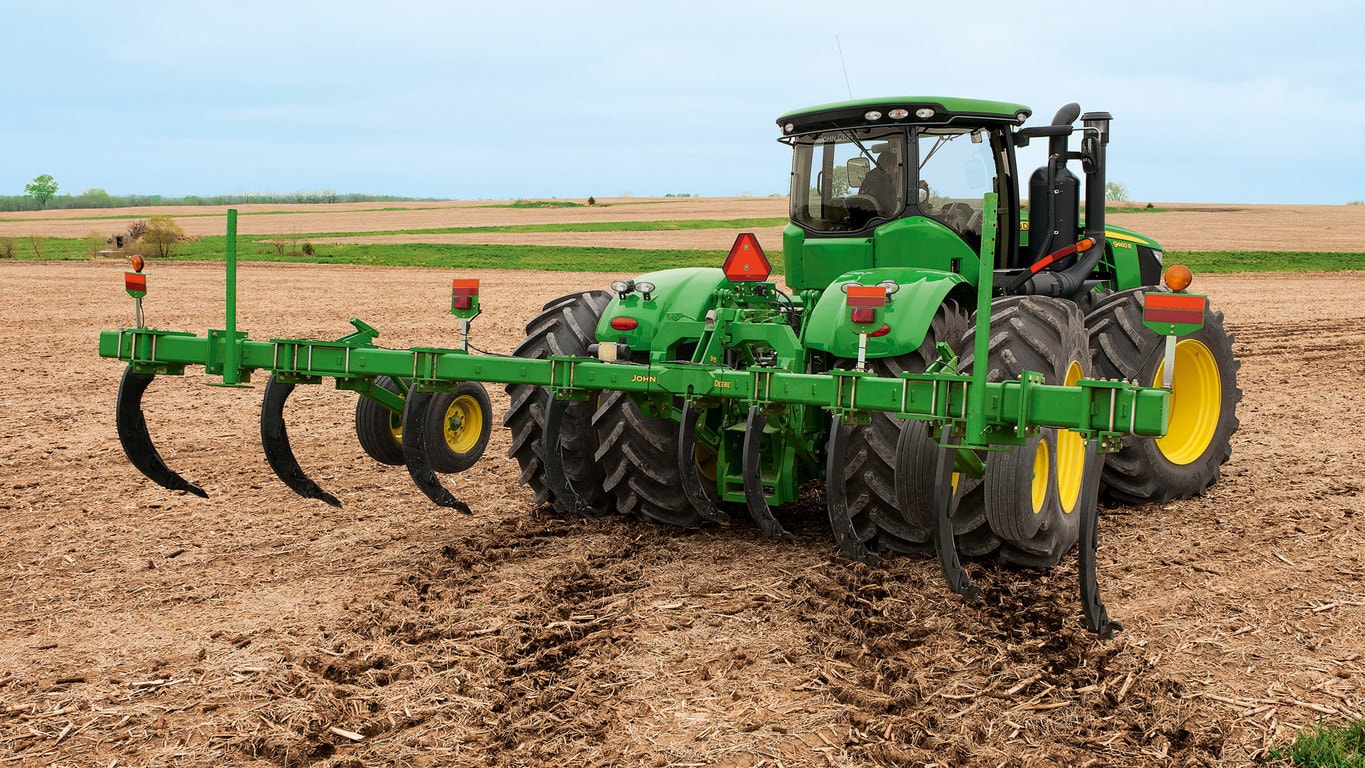Subsoiler vs. Ripper for Tractor - What is the Difference?

Table of Contents:
1. What Is a Subsoiler?
2. Benefits of Subsoiling
3. Subsoiler Disadvantages
4. What Is a Ripper?
5. Benefits of Using Tractor Ripper
6. Subsoiler vs. Ripper - Which Agricultural Tool Should I Choose?
7. Your Invaluable Help in Ripping
Among all tractor attachments, there are two that often get confused, subsoiler and ripper. At first glance (literary!) They seem identical. However, the applications and the way they operate are significantly different. Since we are experts in the field, let us put an end to the confusion for the last time. Today's post explains the difference between a subsoiler and a ripper.
What Is a subsoiler?
A subsoiler is an agricultural tool that helps in soil loosening and breaking and provides deep tillage. You might ask: can I simply use a moldboard plow? The answer is yes, but you will not get as deep digs as the subsoiler provides. Using this great tool to dig provides more nutrient soil. Therefore, the subsoiler is the perfect tool for tillage and land preparation. It works exceptionally well in areas with highly compacted soil.
Benefits of Subsoiling
Compacted Soil Removal
By loosening the soil, the subsoiler offers new ways to use it. For example, thanks to enhanced root growth the soil enhances crop yields.
Better Drainage Capacity
Ponding on the surface of the fields, especially where the crops grow, is a genuine problem. Luckily, subsoiling not only provides better groundwater drainage but also helps nutrients nourish more areas of the soil.
Better Fertilizer Absorption
In compacted soils, fertilizer often stays on the surface and evaporates or washes off. It is a waste of resources and causes crops not to grow as the substances are not properly distributed in the soil. Subsoiling makes the soil porous and aerated and is, therefore, the only way for the roots to absorb the fertilizer properly.
Increased Pastures Growth
By aerating the soil, farmers can enhance pasture growth by even 22%.
Subsoiler Disadvantages
Does the subsoiler have any disadvantages? There are two main drawbacks of subsoiling:
Soil Decay
Subsoiling lifts the soil and therefore makes it more erosive. The top layer containing organic matter (alive and decaying) helps to preserve topsoil abundant in crucial nutrients.
Subsoiling mixes the layers of soil, including organic matter. As a result, the best soil lands on top and gets washed off by heavy rains or blown away by fierce winds.
Drying the Soil Out
Many farmers aim to get the subsoiling done to let the soil dry out in the early spring (or even late winter). Unfortunately, the process of drying out also kills microbes and shortens soil life.
Even though there are some negative effects of subsoiling, it is mostly beneficial for the soil and agricultural tasks.
What Is a Ripper?
Another piece of agricultural equipment we would like to focus on today is the tractor ripper. It is a tool frequently used for breaking up solid, rocky areas. It can be used in many applications, such as digging, ripping, or tearing. It can also be used to cut weed roots below the soil surface or re-level stone driveways after the winter.
Benefits of Using Tractor Ripper
Enhanced Productivity
It is one of the most useful tools for farmers when the ground is rocky. It allows for the use of land that was once not suitable for agricultural activities.
Ease of Use and Minimum Maintenance
If the operator is busy, there is nothing worse than having to spend too much time on equipment maintenance. Luckily, this is not the case with the ripper. It is easy to maintain and requires no daily lubrication.
Low Noice Levels and Precise Work
Even though the ripper breaks down the rocky ground, it does it with little noise and great precision.
Subsoiler vs. Ripper - Which Agricultural Tool Should I Choose?
The answer to the above question is it depends. Both tools have their advantages and specific applications in which they perform better. To help you determine which attachment will suit you more, below, we have prepared a comparison of the most crucial aspects of both tools.
Definition: a subsoiler helps to loosen the soil, whereas a ripper rips the soil.
Different depths: subsoiler works to the depth of approx. 24 inches (60 cm). The Ripper maximum working depth is at approx. 14-18 inches (35-45 cm).
Application: a subsoiler is used with compacted soil, and the ripper is used in the case of rocky surfaces.
Functions: tractor subsoilers help with tillage and land preparation, whereas the ripper helps only with tillage.
Your Invaluable Help in Ripping
If you are looking for a durable yet affordable ripper attachment, we have your back. Our Blue Diamond ripper allows for adjustment of the ground penetration. It is made of American steel and comes in many sizes and various weights. You can also get it with an optional finishing rake. If you are unsure whether the ripper is the right choice, we are available to answer all your questions to help you choose the perfect tool. You can use our online chat and resolve all your doubts in no time.

